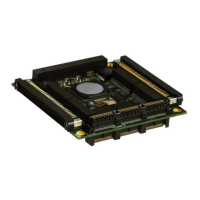ETHERNET INTERFACE NAMING
An Ethernet interface (“port”) is identified by three pieces of information:
Its type: FastEthernet, GigabitEthernet, 2.5GigabitEthernet, 5GigabitEthernet, 10GigabitEthernet.
The switch it belongs to. For non-stacking systems this value is always 1.
The port number within the type and switch. The switch and port numbers are separated by a
slash, such as 1/1. The numbering starts with 1 for each type, so a switch may have both
GigabitEthernet 1/1 and 2.5GigabitEthernet 1/1, for example.
Many CLI commands accept a list of interfaces. In a list, the switch ID and port numbers can be listed as
single numbers, as a range like 1-3, or as a comma-separated list (no spaces) like 2,4,6.
Examples:
You can use a wildcard (*) for the type and/or switch ID and/or ports to mean “all types”, “all switch IDs”
and “all ports”, respectively.
‘*’ means “all ports of all types on all switches”
type ‘*’ means “all ports of the specified type on all switches”
Examples:
This example assumes a stack with two switches, switch ID 1 and 3. Each switch has 9 gigabit ports and
two 2.5 gigabit ports.
interface * (or: interface * * *)
All ports of all types on all switches: GigabitEthernet 1,3/1-9 2.5GigabitEthernet 1,3/1-2
interface * 1/2
Switch 1, port number 2 of all types: GigabitEthernet 1/2 2.5GigabitEthernet 1/2
interface * */2
All switches, all types, port number 2: GigabitEthernet 1,3/2 2.5GigabitEthernet 1,3/2
interface * */4
All switches, all types, port number 4: GigabitEthernet 1,3/4. Note that there are no 2.5 gigabit
ports in the result.
interface GigabitEthernet 3/*
Switch 3, all gigabit ports: GigabitEthernet 3/1-9
interface 2.5GigabitEthernet * (or: interface 2.5GigabitEthernet */*)
All 2.5 gigabit ports on all switches: 2.5GigabitEthernet 1,3/1-2
Wildcards will include the largest possible set of ports, but may output an error message if a specific
switch ID or port number doesn’t exist. For example, these sets are invalid:
interface * 2/*
All ports of all types on switch 2 – which isn’t a member of the stack
interface * */100
There is no port 100 of any type on any switch.
interface GigabitEthernet */* 2.5GigabitEthernet 2/*
Again, switch 2 doesn’t exist so the entire set is considered invalid.
Validity is determined per set of (type, switch ID/port) containing wildcards. The result for that set is valid
if there is at least one port that matches the set. A list of sets is valid if all sets match at least one port
each.

